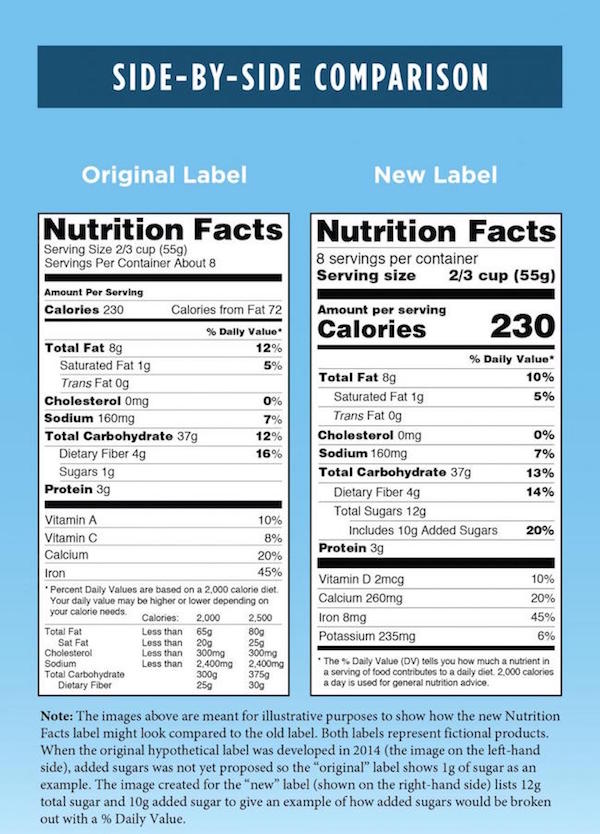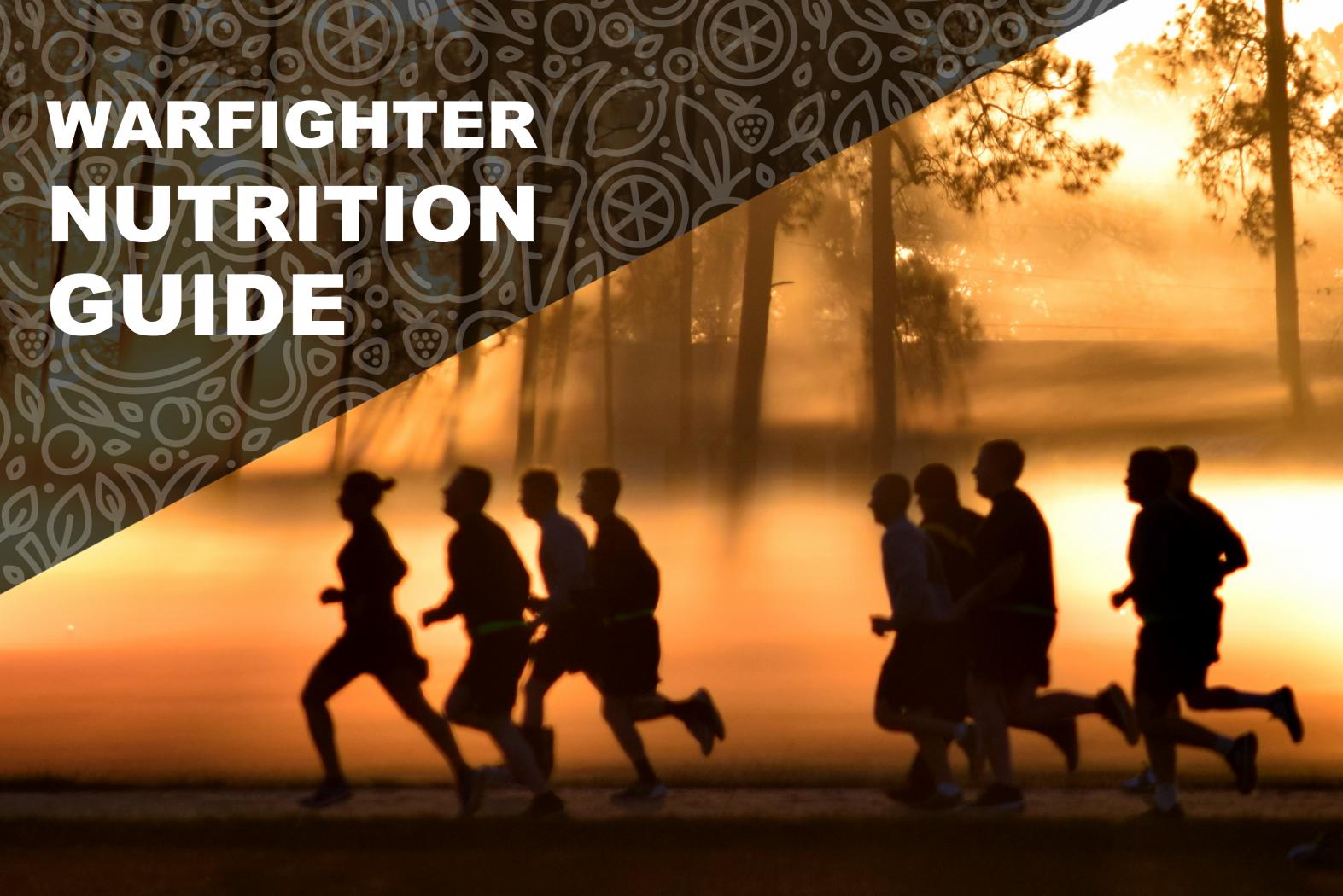- French, S. A., Story, M., Neumark-Sztainer, D., Fulkerson, J. A., & Hannan, P. (2001). Fast food restaurant use among adolescents: Associations with nutrient intake, food choices and behavioral and psychosocial variables. International Journal of Obesity, 25(12), 1823–1833. doi:10.1038/sj.ijo.0801820
- Lin, B.-H., & Guthrie, J. (2012). Nutritional quality of food prepared at home and away from home, 1977–2008. United States Department of Agriculture Agricultural, Washington, DC. Retrieved from: https://www.ers.usda.gov/webdocs/publications/43698/34513_eib-105.pdf?v=0
Key Points
- Nutritious homemade meals can boost mission performance.
- Smart grocery shopping is the first step toward healthy meal preparation.
- Use the Nutrition Facts labels on packaged foods to help guide your choices.
- Every meal is important for overall health and performance.
- Use snacks as opportunities to pack more high-performance fuel into your day.
Homemade meals can have a positive impact on your performance, your health, and your family. When you cook, you can choose your ingredients and how your food is prepared. This chapter provides basic information on how to prepare and eat balanced meals and snacks at home.
Boost nutrition with homemade meals
Making your own meals is a better choice than dining out because you can control the ingredients and preparation, which means they are generally higher in nutrients (such as fiber, calcium, iron, and vitamins such as folate, B6, B12, C, and E) and lower in saturated and trans fats. Homemade meals don’t need to be fancy, and they often can be planned in minutes. They’re usually cheaper than restaurant meals too.1-2 When cooking at home, use the MyPlate food guide (see Chapter 2) to plan your balanced meals with a variety of nutrient-rich foods, including fruits, vegetables, whole grains, and lean proteins. The Go for Green® (G4G) Guide also can help you choose the best fuel for your plate.
Grocery shopping
High-performance meals start with high-quality, nutrient-dense ingredients. Commissaries and grocery stores offer a wide variety of foods that can be the building blocks for any performance-boosting meal. The key is to know which foods are more wholesome and can best fuel your body. Build your meals and snacks around high-performance fuels such as fruits, vegetables, whole grains, and lean protein.
The tips below can help guide your selections and stretch your food dollars while shopping at the grocery store.
Tips for grocery shopping
- Use a shopping list or smartphone app to help with your meal planning and shopping.
- Shop the perimeter of the store for fresh offerings from all food groups.
- Select a colorful (including white) array of tasty fruits and vegetables.
- Buy whole grains and whole-grain products.
- Choose low-fat dairy products or consume smaller portions of full-fat dairy products.
- Purchase lean protein sources.
- Consider meat alternatives such as beans, nuts/seeds, and soy products.
- Buy heart-healthy fats such as olive and canola oils, nuts, seeds, and soy products.
- Limit drinks and foods that contain added sugars.
- Read Nutrition Facts labels on packaged foods and carefully choose indulgent foods.
For more ideas, visit the MedlinePlus page about healthy grocery shopping.
Decoding Nutrition Facts
Packaged foods display Nutrition Facts labels that can help you get a sense of the nutritional content of what you’re eating. When shopping for groceries, read Nutrition Facts labels to compare foods and determine which ones suit your nutritional goals. Recently revised after 20 years, the new Nutrition Facts label must appear on all packaged foods by 1 January 2021. In the meantime, you still might see the old version on products in your store.

Serving sizes and calories
Always look at serving sizes first, so you can see how the rest of the information on the label relates to how much you’re actually going to eat. The new Nutrition Facts label shows serving size in larger print for easier readability. Many serving sizes also have been revised to more closely match what people typically eat or drink.
Take a look at the number of servings per container too. You might be surprised how many servings are in that package of cookies or bottle of juice. It’s often more than one. If you eat more than one serving, multiply each component (calories, fat, carbs, etc.) by the number of servings you ate to get the actual amount you consumed.
The upper part of the Nutrition Facts label lists calories, total fat (saturated fat and trans fat), cholesterol, sodium, total carbohydrates (including fiber, total sugar, and added sugar), and protein. The amount of each nutrient is displayed in grams or milligrams (sodium and cholesterol) and as % Daily Value.
Percent Daily Value
The % Daily Value (DV) tells you how much of a nutrient a food provides compared to how much you need every day. Keep in mind that DV is based on a standard 2,000-calorie diet, which might not be enough for a service member due to a Warfighter’s training needs or job duties.
In general, more than 20% of any nutrient is high—whether the food is “high” in a nutrient you should eat more of (such as fiber) or “high” in something you should limit (such as cholesterol). In addition, anything less than 5% is low—whether the food is “low” in added sugar or “low” in fiber.
Micronutrients
The lower part of the Nutrition Facts label lists micronutrients. The new panel displays amounts of vitamin D, calcium, iron, and potassium. Vitamin D and potassium are now listed because many Americans don’t get enough of these essential minerals. Vitamins A and C are no longer included since deficiencies of these are rare. Other nutrients might be included on the Nutrition Facts label as well.
Ingredients and allergens
According to federal regulations, any packaged food with more than one ingredient also must carry an ingredient list on the label. The ingredients are listed in descending order according to weight (not volume). For example, if your granola bar lists sugar as its first ingredient, this means that there is more sugar (by weight) than any other ingredient listed. If you have any food allergies or intolerances, double-check the ingredient list for any ingredients you need to avoid or limit. The 8 most common allergens are milk, soy, wheat, tree nuts, seafood, shellfish, eggs, and peanuts. Allergen information is listed below the ingredients in bold, making it easier to find.
Breakfast: Off to a healthy start
After a night of rest and 8–12 hours without food, your body needs fuel in the form of glucose (also known as sugar), especially if you exercise in the morning. Breakfast is your body’s early-morning refueling stop to keep you energized until lunchtime. It’s also another opportunity to eat important nutrients that your body needs to power your day. Nutrient-dense choices such as a bowl of cereal with low-fat milk, toasted whole-grain bread with natural peanut or almond butter, and a piece of fresh fruit are easy and quick choices that you can prepare and eat at home.
Lunch: Midday fuel
Pack your nutritious lunch at home and take it to work. Weekday brown bagging also saves money. More important, you can control what and how much you’re eating and how it’s prepared. Try to fill half your plate with fruits and vegetables. Think about where you’ll eat and plan accordingly because some foods are better suited for eating at a table while others can be eaten on the go. Some tasty ideas include:
- Vegetables: Pack raw or lightly steamed (then chilled) choices with a small container of dip or olive oil-based salad dressing.
- Hummus: Use as a dip or sandwich spread.
- Stuffed tomatoes or bell peppers: Add tuna, chicken, egg, pasta, or rice.
- Salads: Include a colorful, vegetable-based salad with your sandwich.
- Sushi rolls: While these are terrific lunchbox fare, try to avoid deep-fried rolls or ones with cream cheese.
- Trail mix: Make your own with raisins or other dried fruit, whole-grain cereal or air-popped popcorn, and nuts or seeds.
- Fruit: Grab several pieces of fruit to go and try some with Greek yogurt.
Dinner: Finish strong
Sometimes it can be hard to figure out what you should eat for dinner, especially after a long day at work. But with good planning and shopping skills, you can put together a balanced plate quickly. Although planning takes some time, and shopping for foods is a must, you can prepare many nutritious meals ahead of time or within 30 minutes. Try these quick dinner strategies:
- Use canned, frozen, or pre-washed vegetables such as lettuce, baby carrots, and spinach. (Be sure to rinse canned varieties if you’re trying to limit your sodium intake.)
- Use weekends to plan and prepare meals that you can pop in the oven or microwave when you’re ready to eat.
- Invest in a crockpot: Toss ingredients into the crockpot in the morning, and you’ll have a delicious, balanced meal waiting for you at dinnertime.
Other easy, nutritious dinner ideas include:
- Whole-grain pasta or rice with lean protein (tofu, meat, or fish) and vegetables.
- Brown rice and beans with salsa.
- Sirloin steak, baked potato, and leafy green salad.
- Grilled salmon, baked sweet potato, and vegetables.
- Colorful salad with beans or lentils, topped with an olive oil-based dressing or nuts/seeds, and whole-wheat toast.
- Sandwiches made with whole-grain bread, lean meats, and plenty of veggies (cucumber, lettuce, and tomato).
Cook whole grains such as brown or wild rice, barley, whole-wheat pasta, or quinoa in large quantities for use throughout the week. Just reheat and add grilled, baked, or roasted lean meats and vegetables to help round out meals that support performance and recovery.
Healthy snacking
Snacks help maintain physical and mental performance. Carefully chosen snacks can fill nutritional gaps and boost energy without causing weight gain. Think through a typical day. How often and where do you usually snack? Are your snacks high in nutrients or loaded with “empty” calories?
Snacking tips
- Plan and prepare snacks ahead of time.
- To stave off hunger longer, pick snacks with protein, fiber, and heart-healthy fats.
- Match snacks to your activity level. If you’re more sedentary, choose ones that are lower in calories or smaller in size. However, if you’re active and exercise daily, you might need larger portions or more frequent snacks.
- Be conscious of portion sizes (as discussed in Chapter 2).
- If possible, avoid snacking in front of the TV or computer because it’s too easy to overeat.
- Avoid all-day nibbling or eating directly out of the bag or box, which makes it difficult to keep track of how much you’re eating.
- Read HPRC’s article about smart snacking for more ideas.
Snacking environment
Satisfy your snacking urge with convenient and healthy choices—whether you’re at home, at work, or on the go.
Stock your fridge and freezer at home (and at work) with:
- Greek yogurt, cottage cheese, cheese sticks or slices, and milk
- Lean deli meats
- Whole fruits and cut-up raw veggies
- 100% fruit and vegetable juices
- Frozen juice bars
- Plain baked potato or sweet potato with a sprinkle of cheddar cheese
- Whole-wheat pita bread or English muffins with tomato sauce, Italian herbs, a sprinkle of mozzarella cheese, and diced peppers for instant pizza
- Whole-grain bagel with peanut butter and banana slices
- Single-serve packs of vegetables or fruit with dip
- Natural peanut, cashew, or almond butter with whole-grain crackers or bread
- No-bake energy bites
Shelf-stable options:
- Vegetable or bean soups in heat-and-serve cans or instant soup cups
- Refried beans or salsa with whole-wheat tortillas or baked chips
- Snack-size boxes or packets of cereal, instant oatmeal, raisins or other dried fruit, or whole-grain pretzels
- Trail mix
- Mini cans or single-serve pouches of water-packed tuna or chicken
- Beef jerky
- Single-serve fruit cups packed in 100% juice or water
- Dry-roasted, unsalted nuts or seeds
- Whole-grain granola bars low in sugar
- Canned or boxed 100% fruit juice (no added sugar)
- Single-serve packages of microwave popcorn
For more videos, tips, and hints on cooking equipment, grocery shopping, and cooking, visit HPRC’s Nutritional Fitness domain.

